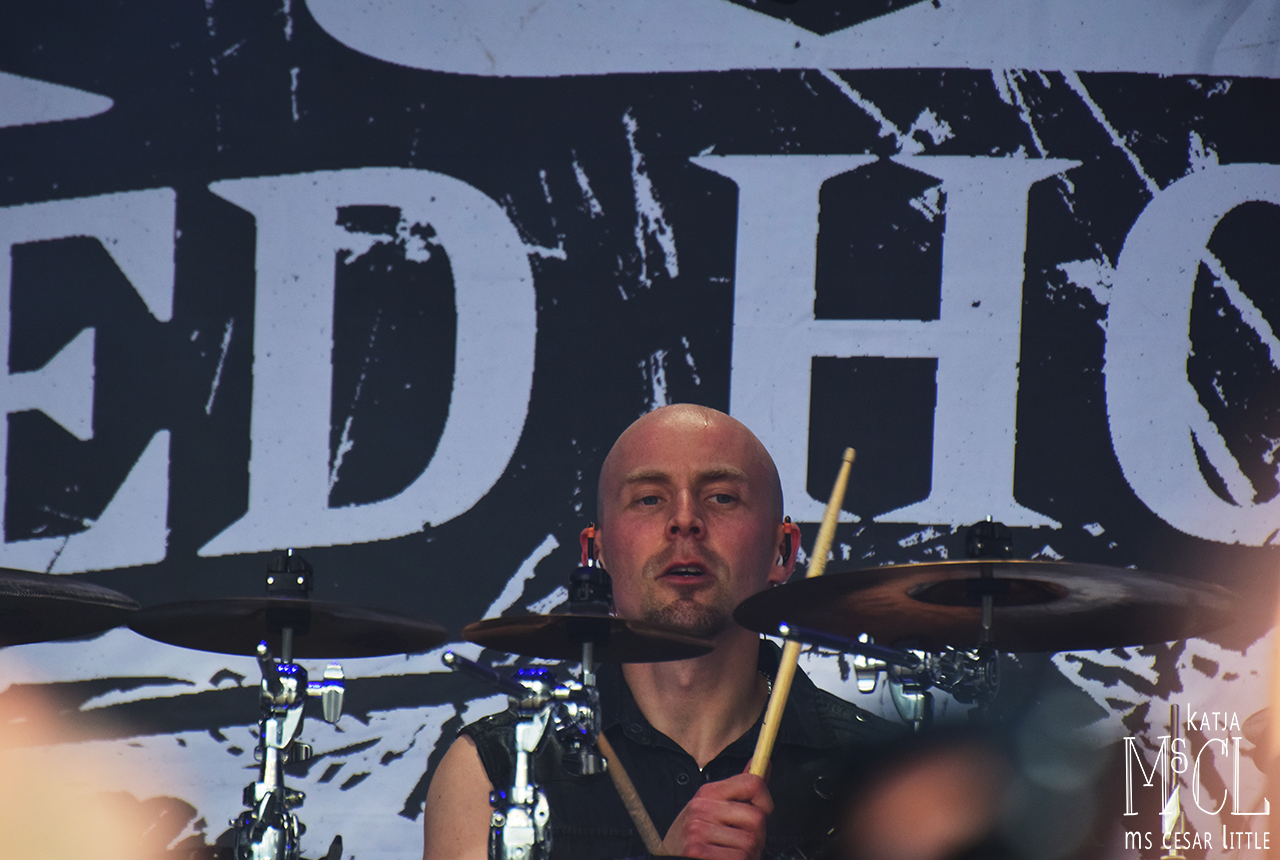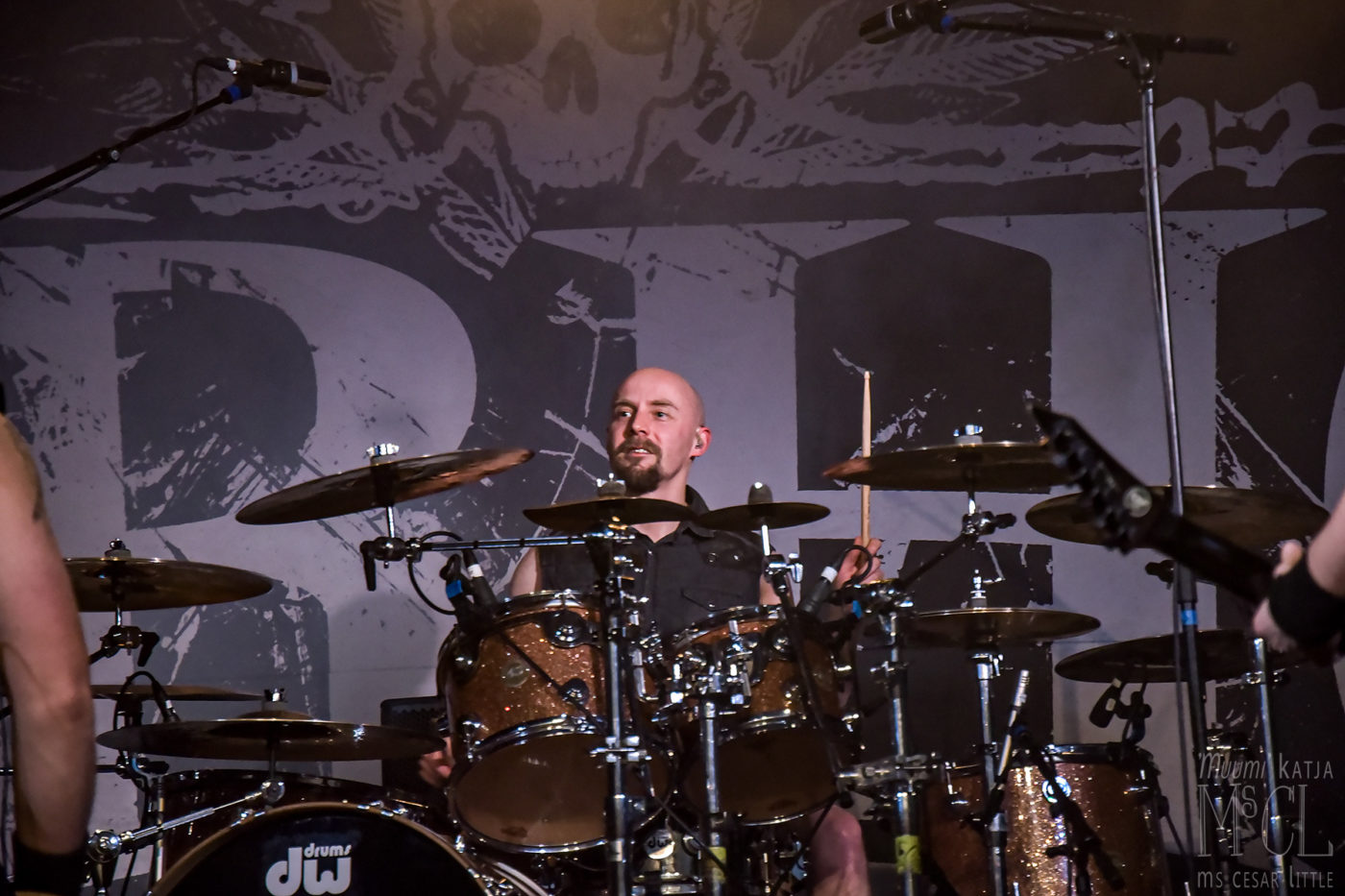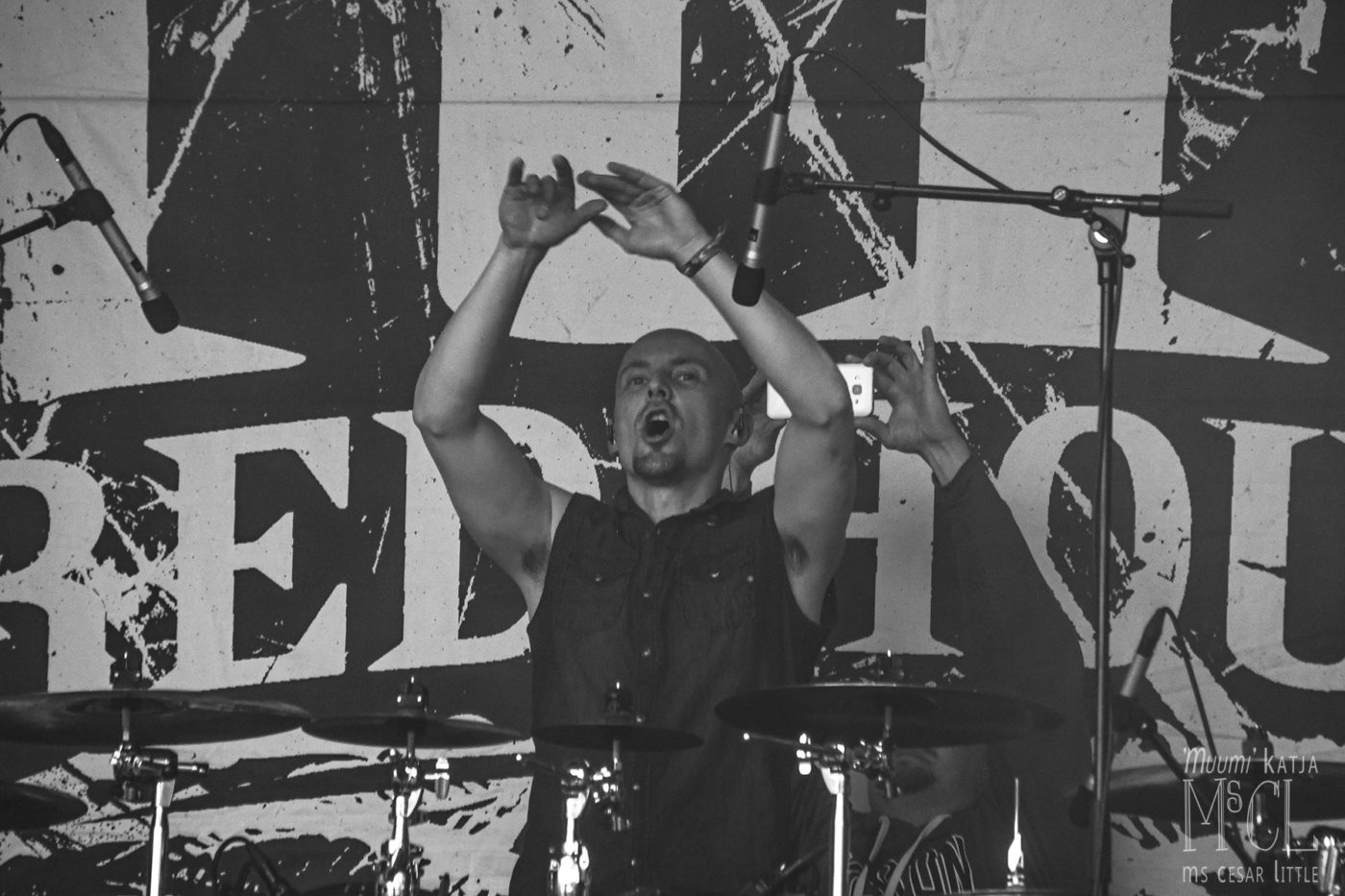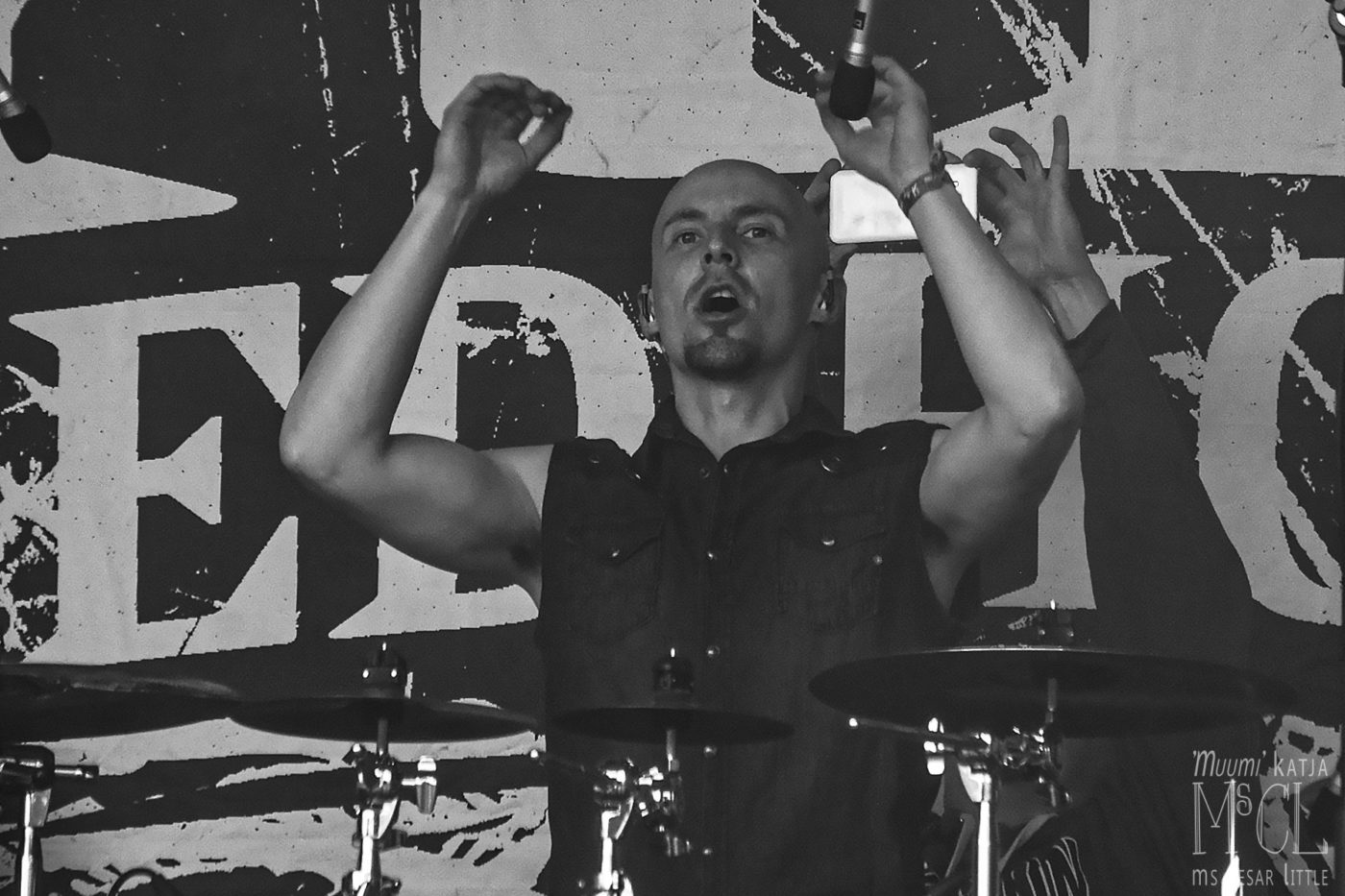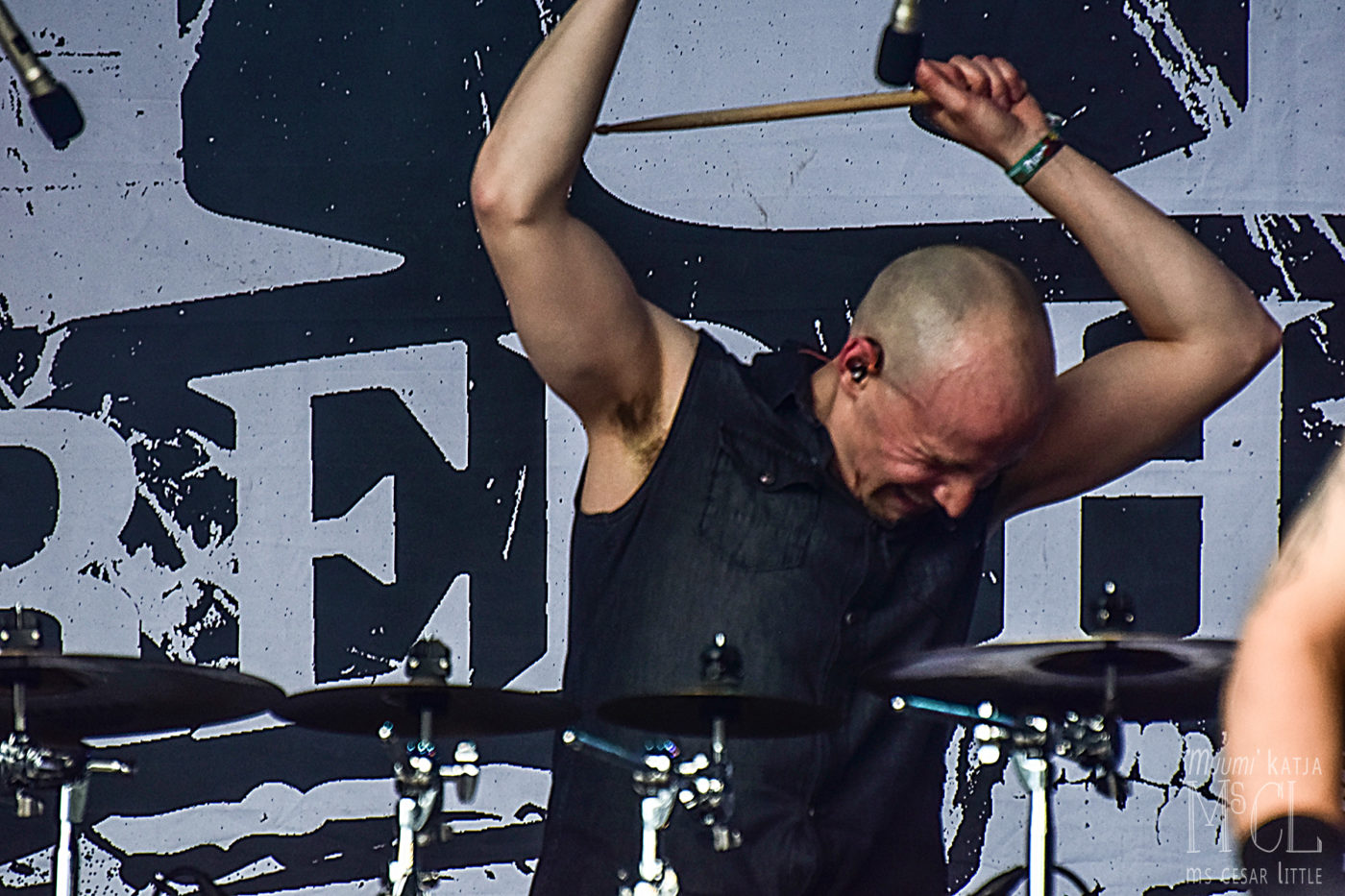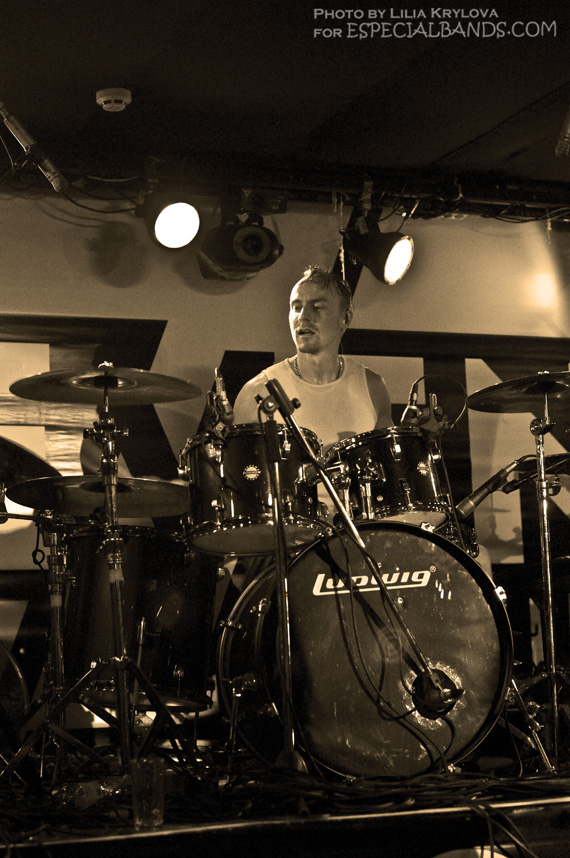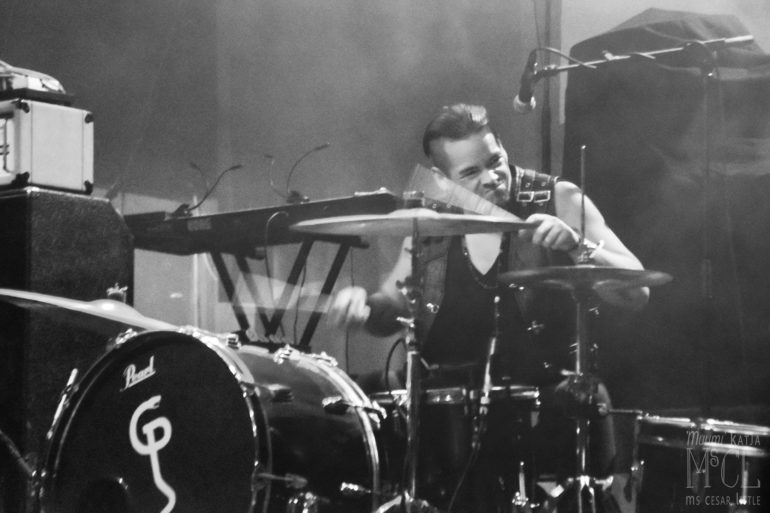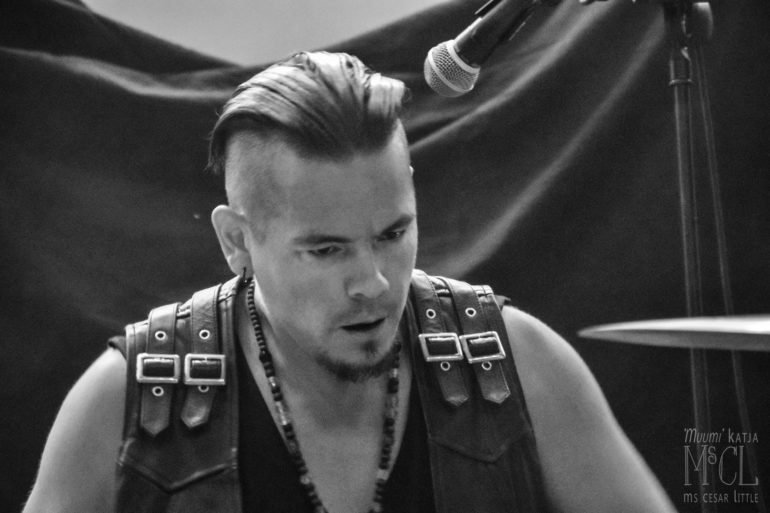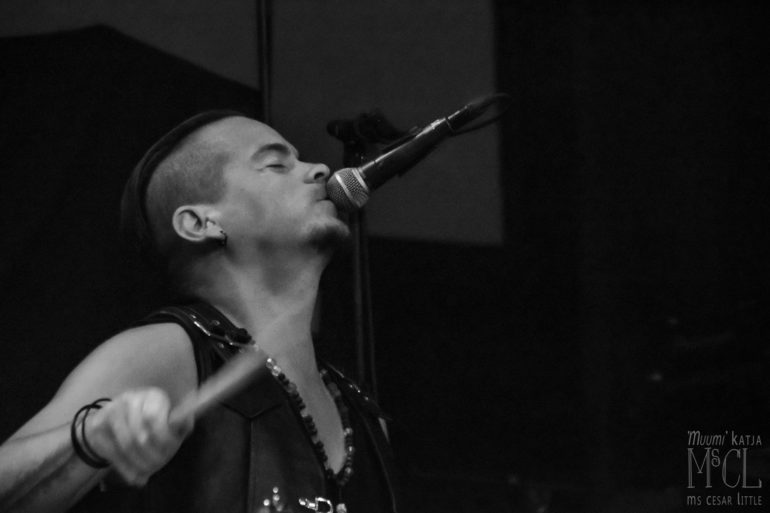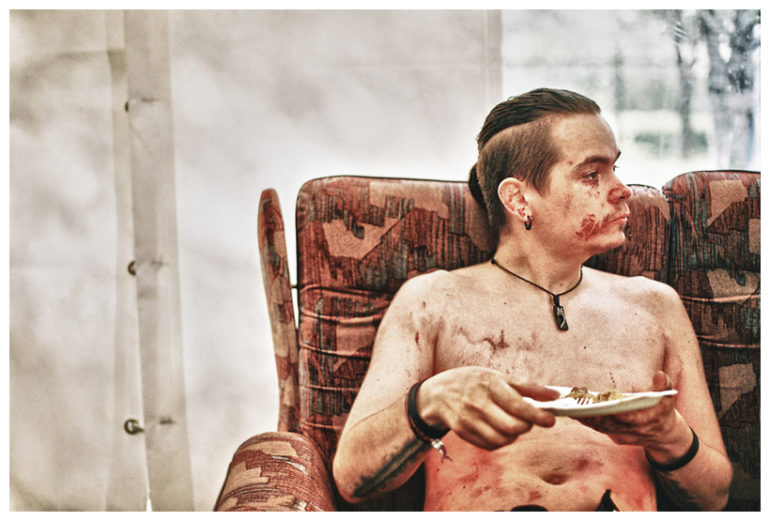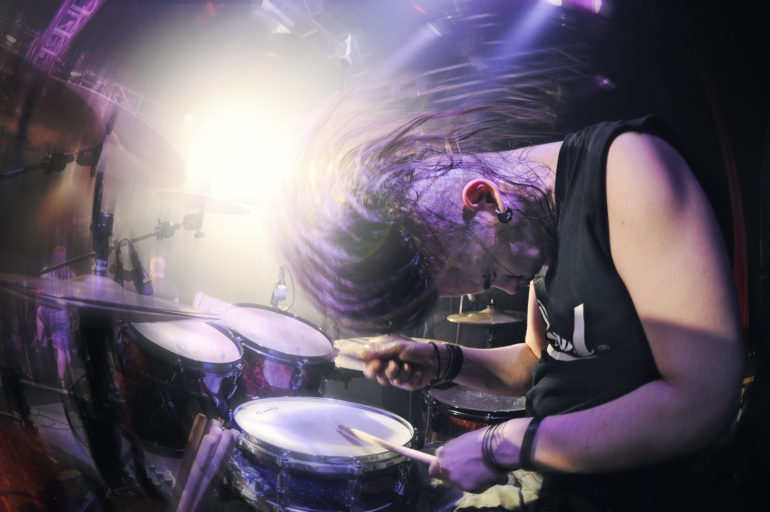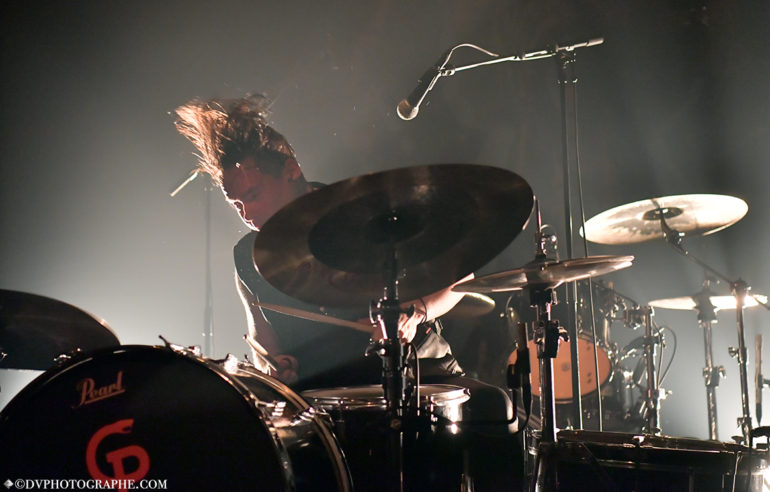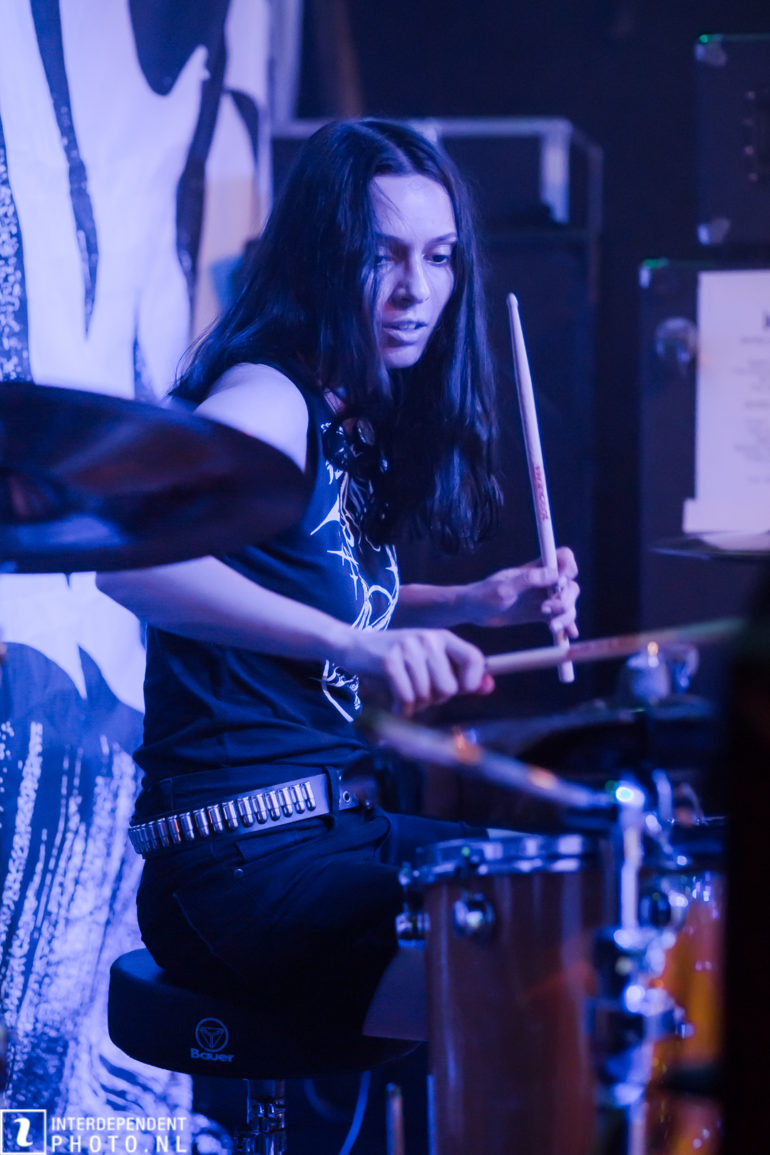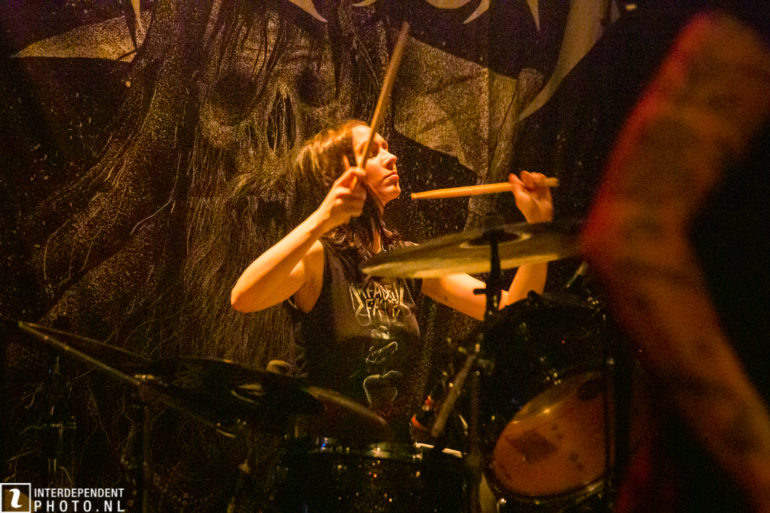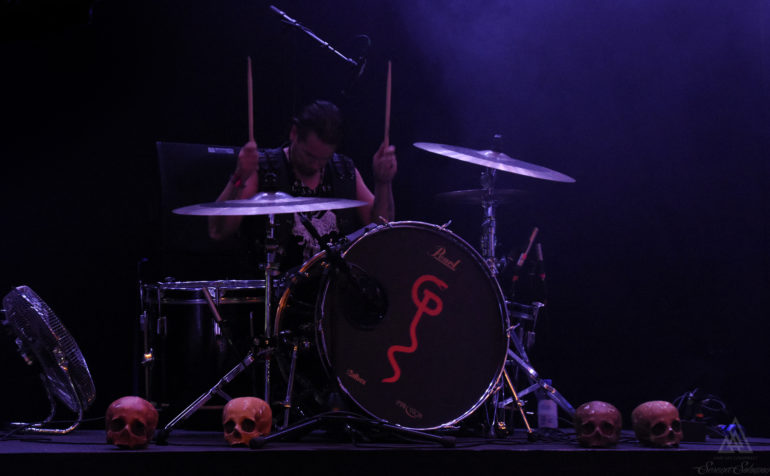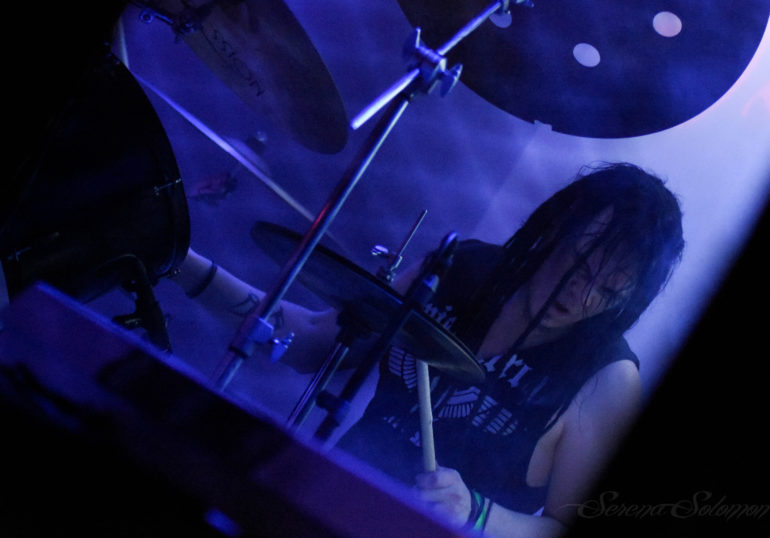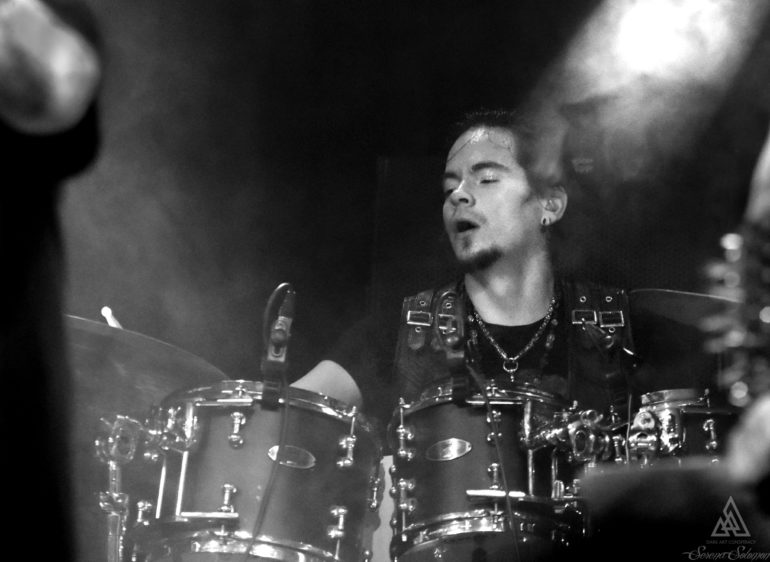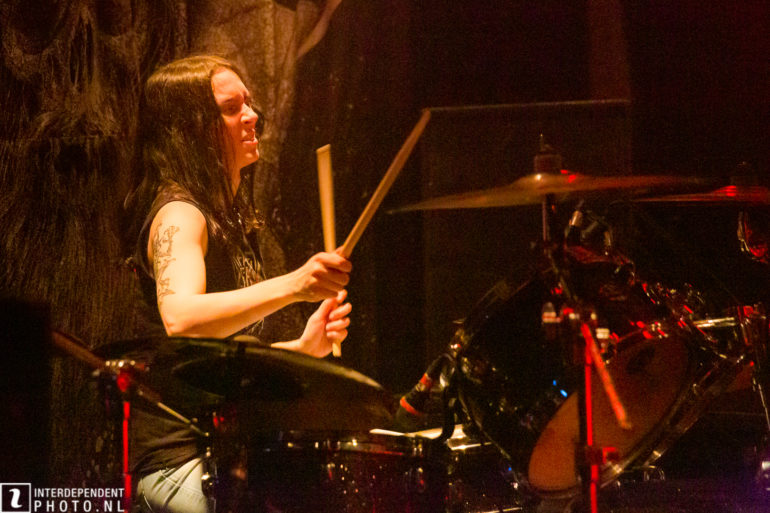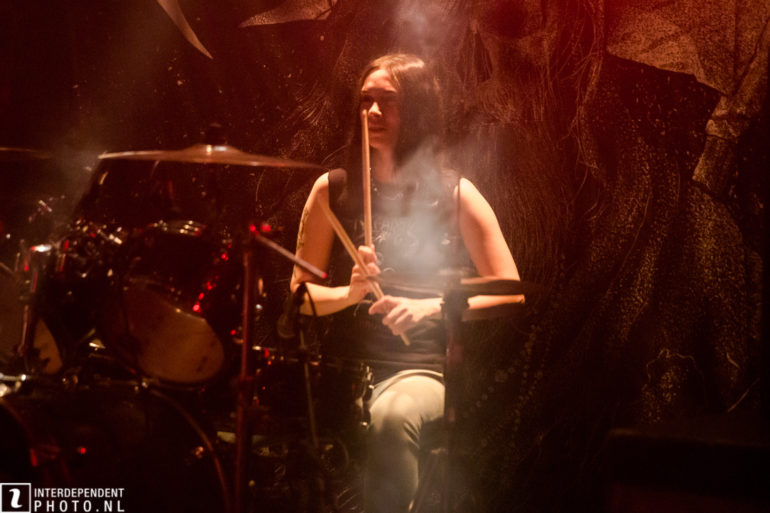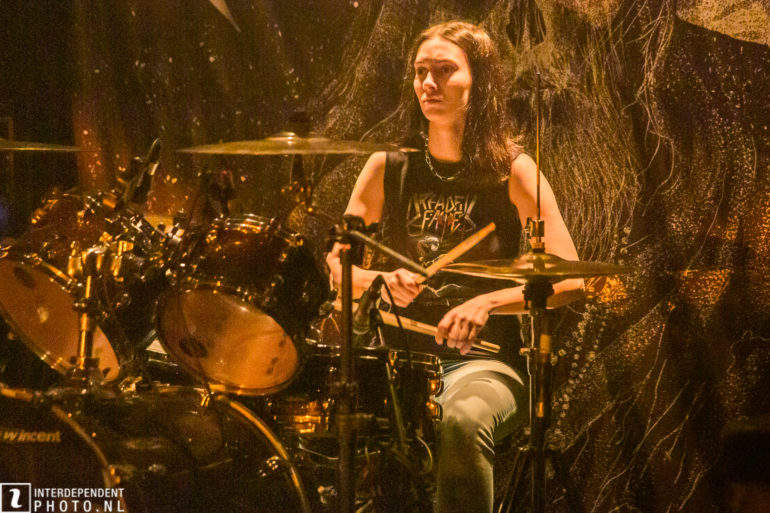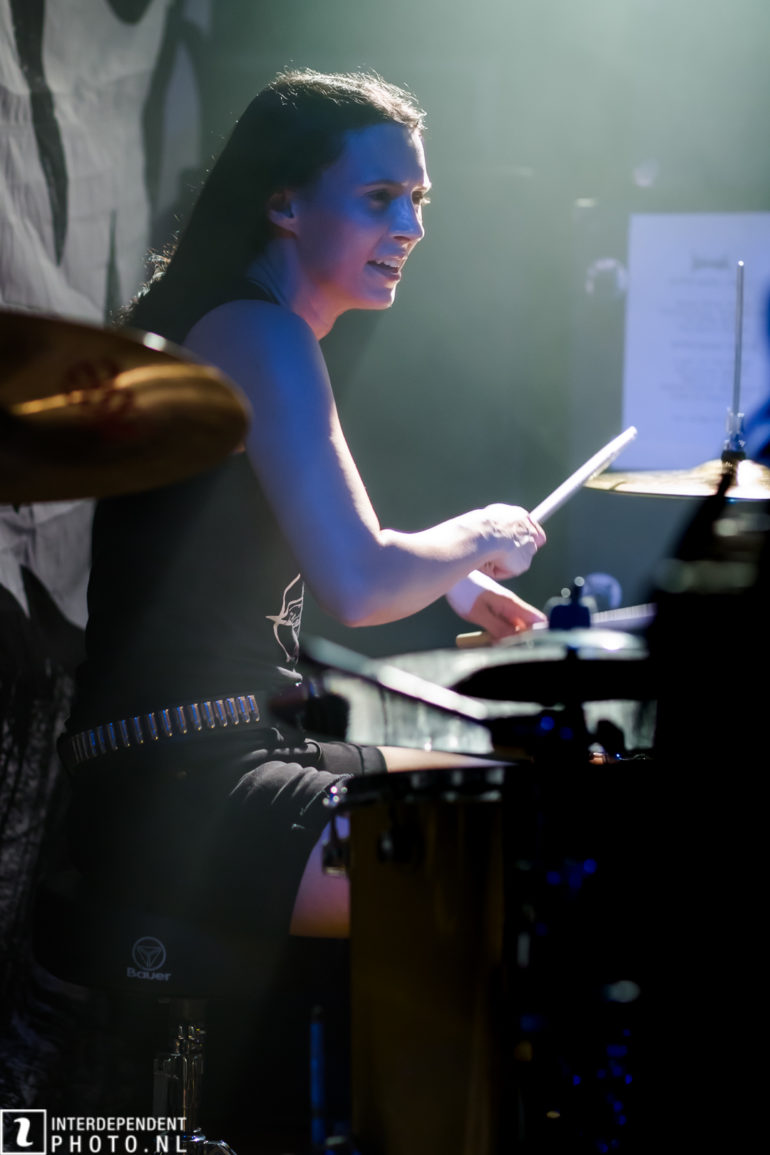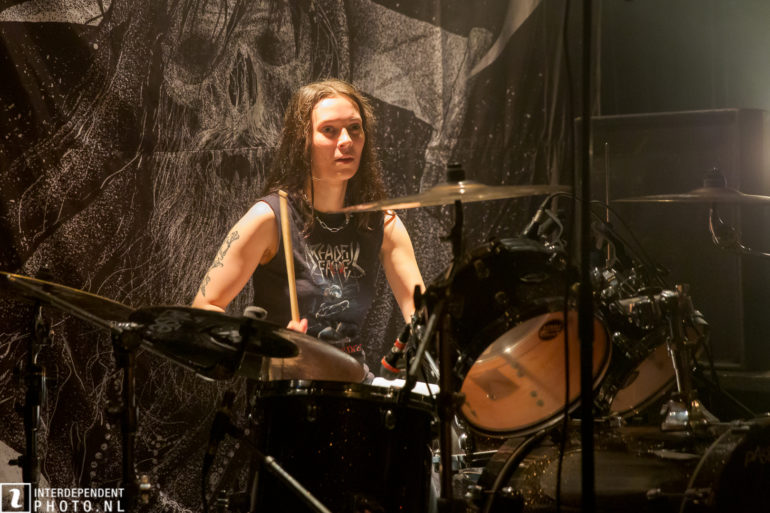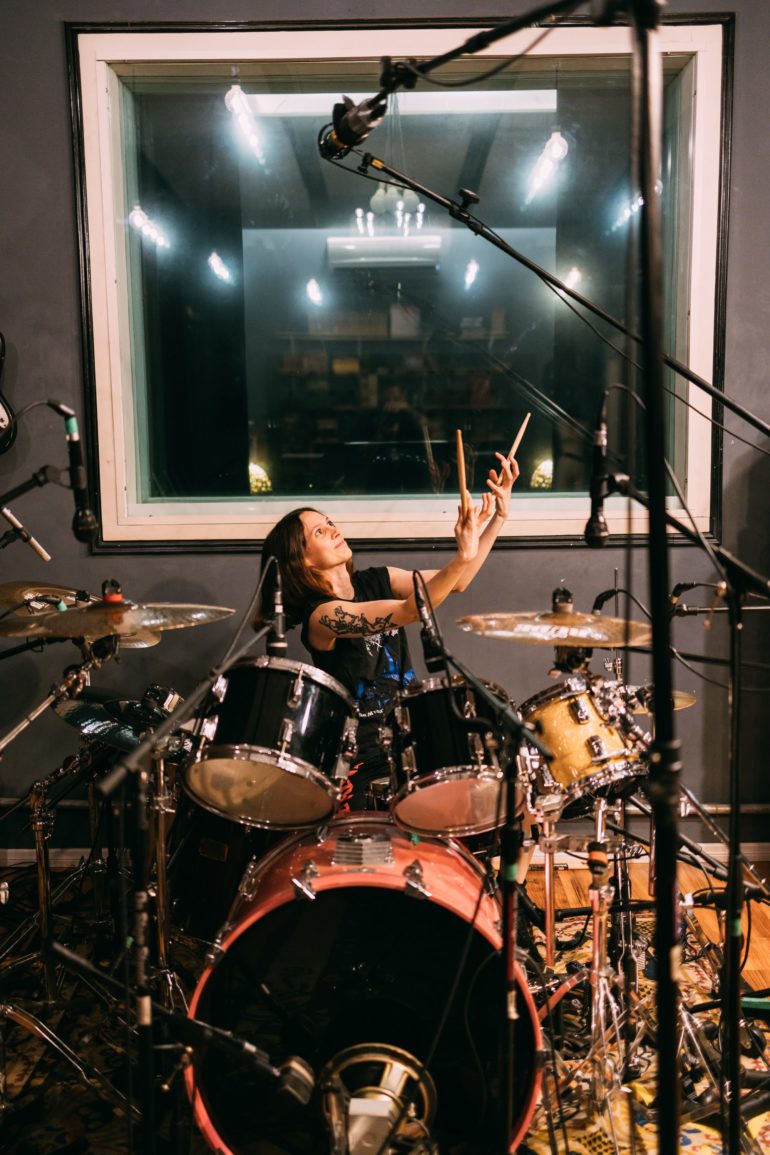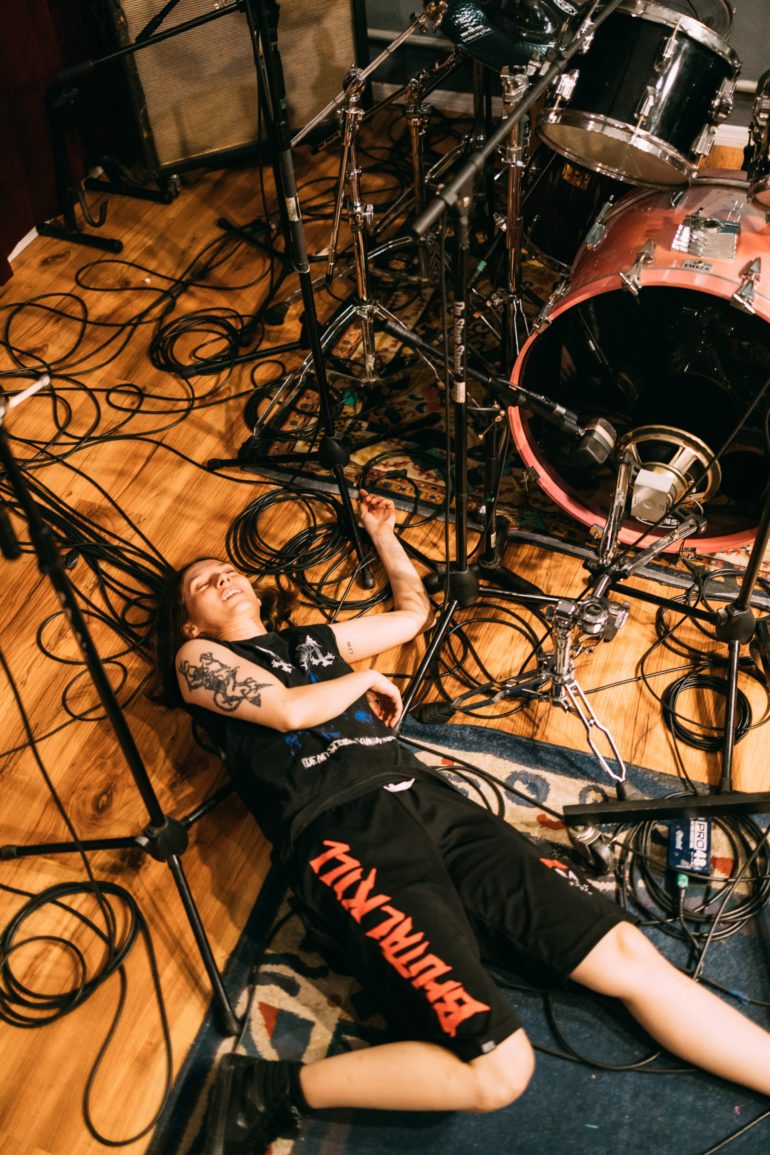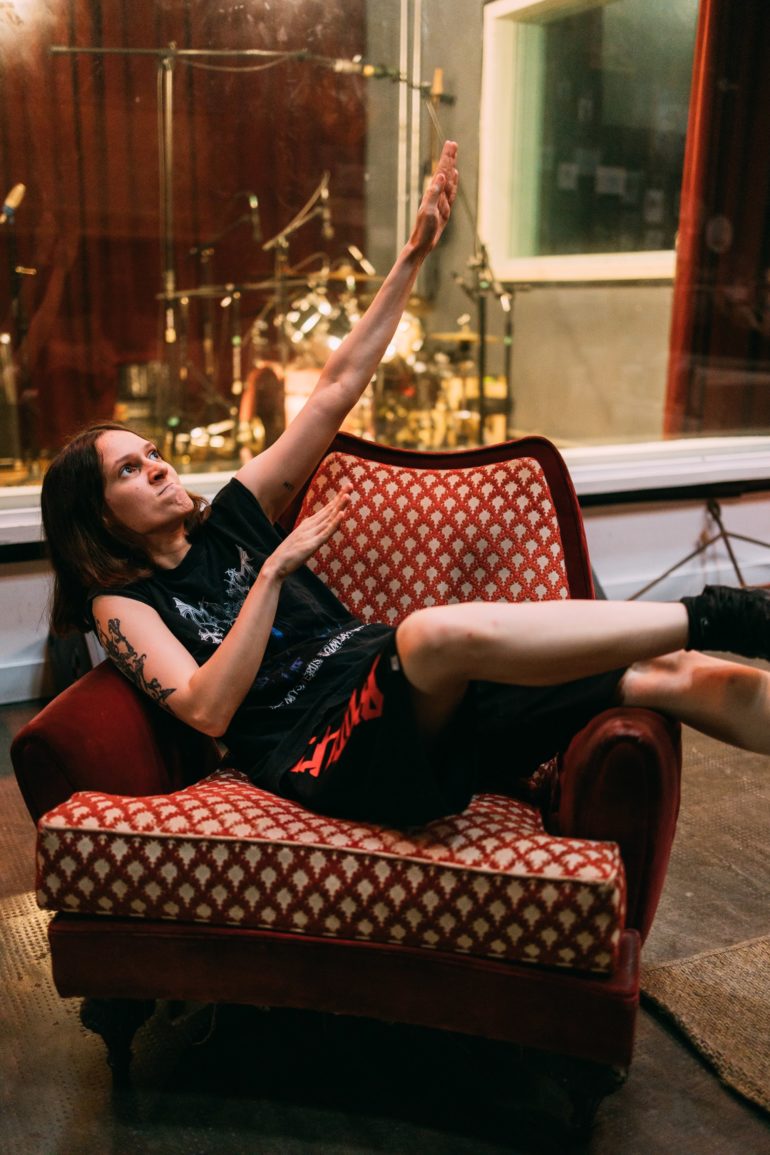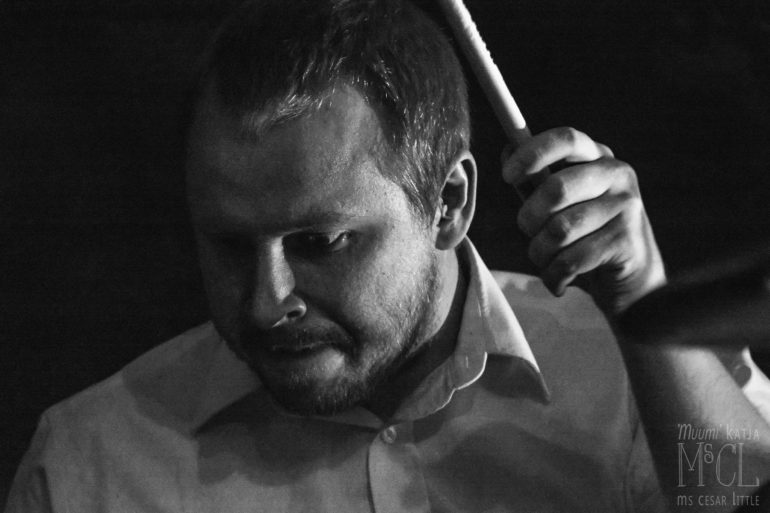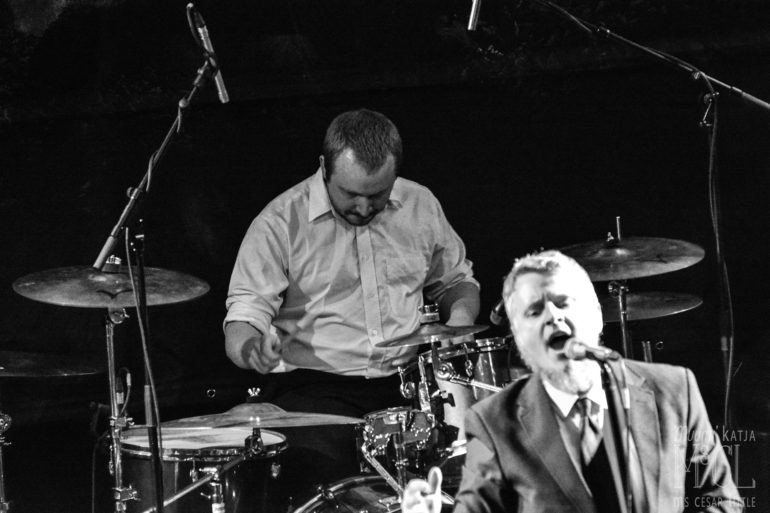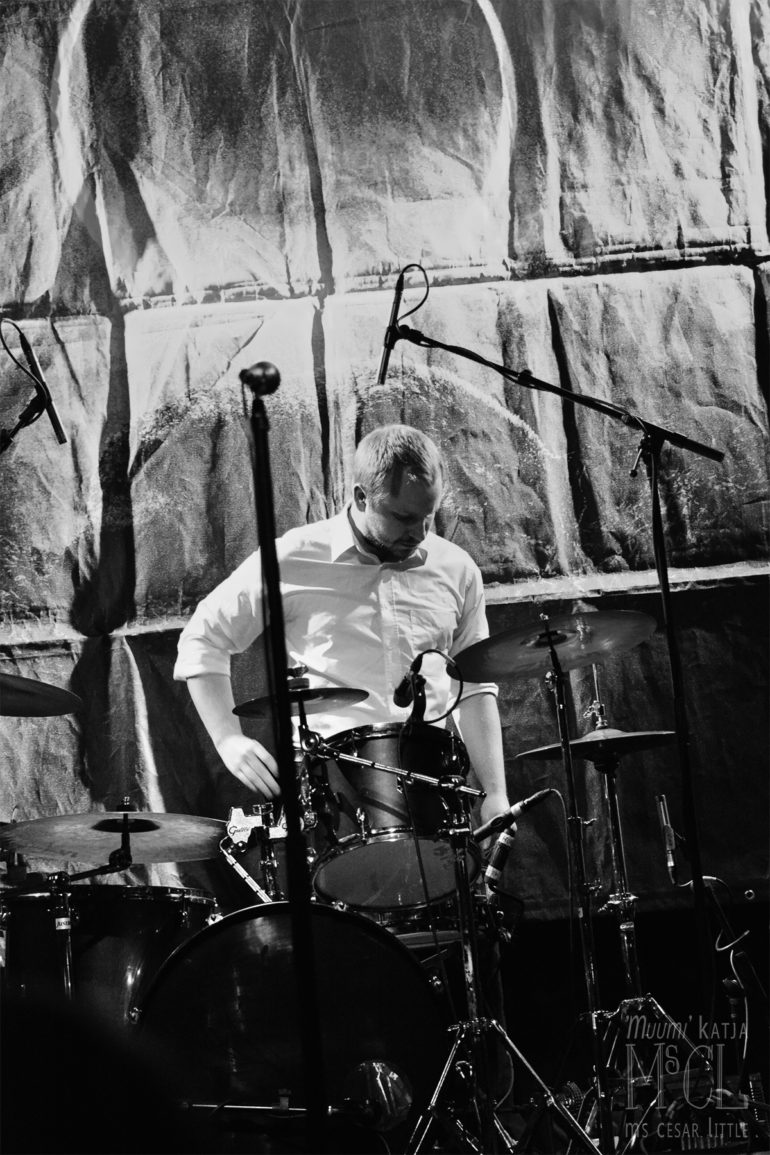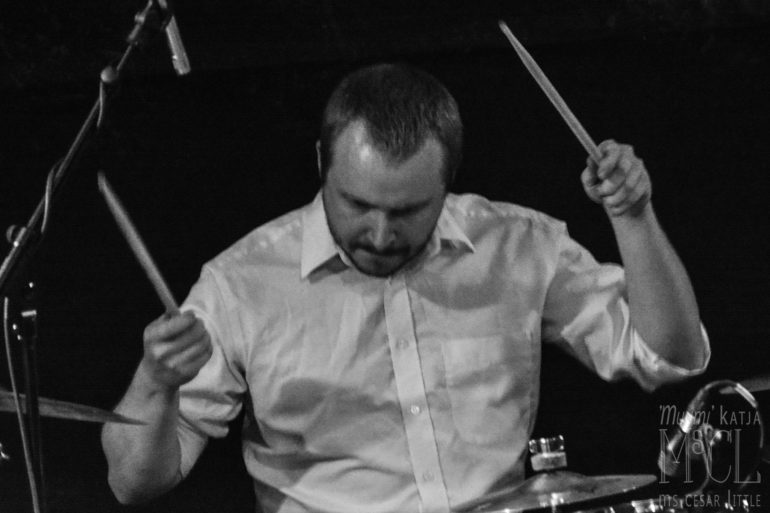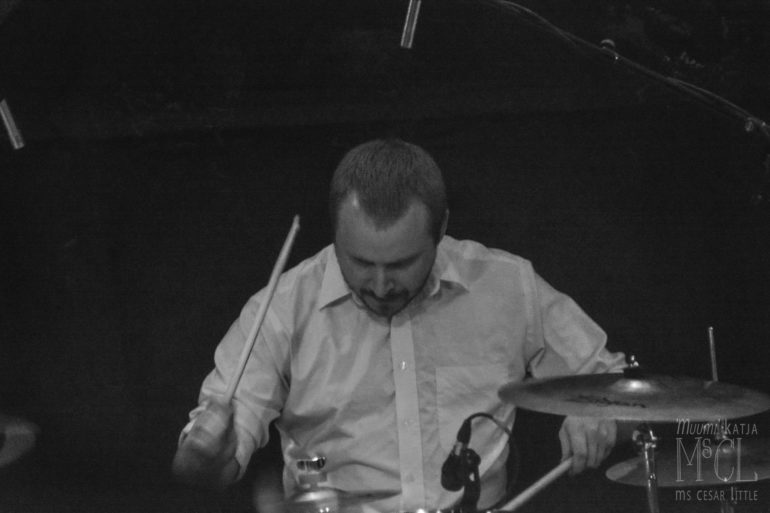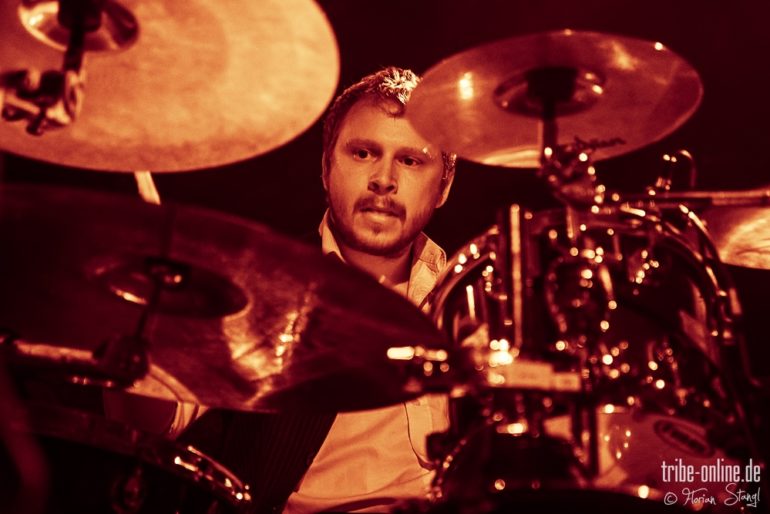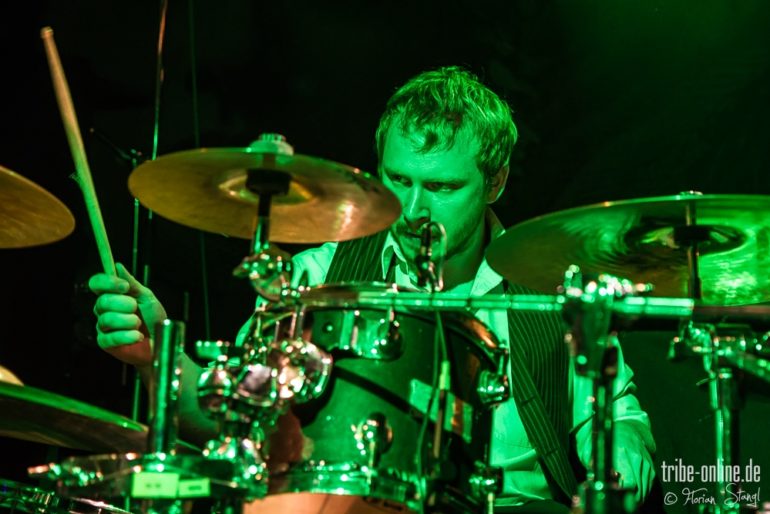The Trinity and The Holy Chair
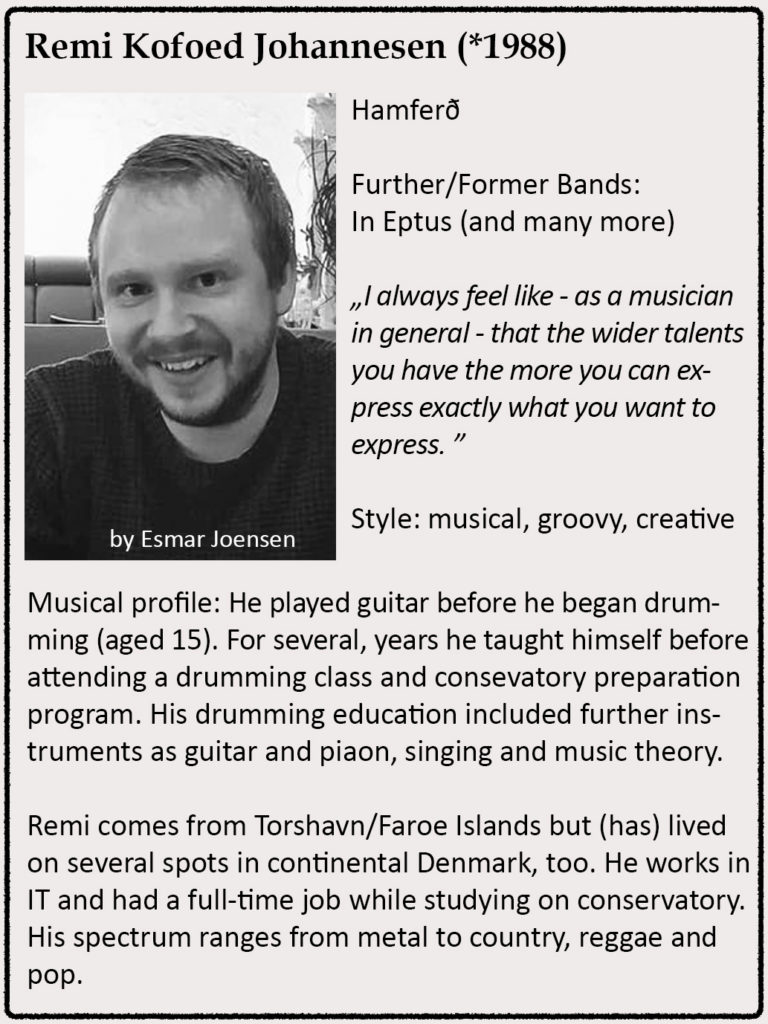 No, don’t worry, you did not accidentally switch to Bible TV. But then setting up of the kit is a ritual and the precise positions are often sacred. While some can play if only approximately the positions are met or even vary a bit from gig to gig, like Jan Rechberger (1994), others need it precise and perfect, like Luana. Otherwise the dynamics will differ or the playing takes too much conscious effort, as Remi describes. With his own kit Jarkko thinks even playing blind might work for him as each kit varies in small details. Consequently Remi prefers touring with his kit which is usually only working when Hamferð are headlining a tour.
No, don’t worry, you did not accidentally switch to Bible TV. But then setting up of the kit is a ritual and the precise positions are often sacred. While some can play if only approximately the positions are met or even vary a bit from gig to gig, like Jan Rechberger (1994), others need it precise and perfect, like Luana. Otherwise the dynamics will differ or the playing takes too much conscious effort, as Remi describes. With his own kit Jarkko thinks even playing blind might work for him as each kit varies in small details. Consequently Remi prefers touring with his kit which is usually only working when Hamferð are headlining a tour.
“I also always set up by myself when I’m on tour”, says Luana. Hardly anyone has met her’s or Rainer’s demands setting up, save for Tommy [Norén] Rosenberg, former drum tech of Leprous, Rainer says. He played with Tommy’s snare tuning for years and it can be found on Ajattara’s as well as Grave Pleasure’s most recent album.
Find the perfect spot for his stool on stage, that’s what Jarkko does first. He wants to see and be seen. No one else has so explicitly mentioned this. From there everything else finds its spot. Remi’s focus is the ‘trinity’ of kick drum, snare and hihat: “The relationship between those three has to be where I want it to be because I like to do a lot of dynamics.” Luana says: “I really need the cymbals to not move too much, the toms to not be so far away from each other, and my pedals to be very tight in the kick bass, that’s what I try to check before every gig.“
Crush On the Perfect Crash
Seemingly, the three male drummers have a bit of a crush on the perfect crash. They give lengthy reports while Luana replies rather briefly “low-pitched cymbals, cause I think they match the songs better, if they are thin or not I don’t care really much, seeing that they match the songs …” Remi sticks with his medium thick cymbals that have to be loud and aggressive, and of course he does need this particular crash sound too.
Remi’ Crush on Crashs Asking for his cymbal preferences triggers Remi’s sort of lexical expertise to pour out: “I like cymbals that are not like now you have the A custom – it’s very popular series for like general drumming. They are very versatile. They work for soft and louder things. Other cymbals are like made for metal and they’re heavy and thick. And then there are more like medium Jazz cymbals that are often thinner and more light in a way. And that can be difficult for metal. If they’re thinner, they’re ‘dryer’, you call it. It’s lower and shorter decay – the sound wears off in a shorter span of time than a big metal cymbal will. But I really, really love that sound. But that sound won’t work with Hamferð! That’s why I am playing so slow: the crush fades out before the next hit. But that wont’t work with those. So that’s why I have medium, again versatile cymbal set ‘cause I love to be able to play loudly and aggressively but also on the balance be soft and dynamic. And it still has that particular crash shell. If you have like thick metal cymbals and you hit it soft it won’t have the proper crash sound as thinner cymbal will.”
Speaking of cymbals with Rainer brings forth his love for craftsmanship and hand-hammered cymbals. He even tried hammering one himself. But “a fucking trash can sounds better, man, than what I made”, he tells me laughing. Jarkko has several times been advised to change to those hand-hammered cymbals (from Turkey) as well. Although he has played with such, for example while recording “Heal”, he sticks with what he has got for no reason he could word.
The Candyshop of Influences
Style and groove that is what comes after technically correct drumming and what differentiates one drummer from any other in the end. It is a most critical detail but at the same time, hardly any other instrument is that often replaced by computer sequences on recordings – to be addressed in more details meeting Aksu Hanttu (S-TOOL), later.
The style of a drummer is vastly affected by the technique of course, which leads us back to learning drums: “My drumming was probably influenced by the many teacher I had when I was starting to play, each of them taught me some details that I still using now days, and created my drumming style”, Luana tells me. Imitating teachers and role models seems to be a natural step when learning and developing an individual style. “Imitating stuff has been my stuff not only in drumming but pretty much anything I can hear …” says Rainer. BRHG began by playing songs from their favourite bands like Linkin Park before writing and playing their own music, and it’s still influenced by Nirvana or Red Hot Chili Peppers or The Foo Fighters. Luana still enjoys watching other drummers: “Eloy Casagrande, to me he is the best drummer in the world now days. He is the perfect combo of every kind of drummer, he hits hard and can be very fast at the same time, it’s groovy and technical, it’s crazy. I really love to go to Sepultura gigs and stay behing the stage to watch him.”
Remi’s top three drummers influencing him were Winny Paul (Pantera), Abe Cunningham (Deftones) and Danny Carey (TOOL): “Those three have a really good combination of groove and creativity and like technicality that I really, really enjoy, like tasty drumming.” Rainer loves the 1980’s music from Punk, New Wave to Metal and back, referring to them and many more, constantly speaking of style and groove. Observing and listening made him cherry pick to progress: “… also the personal evolution – it should never stop. Should Never, never stop.”
How to Make Fred Flintstone Swing
Luana’s cherry picking is: “I think I’m a mix of many of my favourite drummers, but I learned a lot about groove watching Dave Lombardo, and got the Joey Jordision way to stay behing the drums, that doesn’t move very much, and got the blast beats too. I would say I’m a good mix between them, in a simple version.”
But grove, “it’s a really weird thing to comprehend, to grasp” admits Remi who is “still working hard on is like the concept of groove. Because there is a big difference in like just hitting the drums in the correct time but making it swing, making it groove”, he tells me and adds: “I hear some drummers play correct but doesn’t groove at all.”
Groove might be a tiny little detail to understand Rainer’s love for session drumming, as here he can play all the dynamics and groove in all directions. Speaking of New Wave of Punk or Grave Pleasures in particular, he says: “The groove is kind of mechanical in a way and there’s all these kinds of little details you wouldn’t put there unless it serves it some kind of purpose.” He gives me a short history of New-Wave-of-Punk drumming, a style that has evolved from drummers who were not too skilled. That resulted in a style full of short, loopy drum lines:
Drum beats with this kind of Fred Flintstone groove (Rainer Tuomikanto)
Despite its obvious simplicity, this style still gets all the spice from subtle nuances. Perhaps groove is sort of a side effect that results from individual ideas on how to cope with haste in (ultra)fast sequences. One will find hitting harder more useful while another tends to wipe, visible only if we could zoom into each single movement. So groove and speed go together, but then there is Doom! “I’m often trying to apply that on Doom. You know, Doom and groove. That’s just difficult. Slow. It’s hard to make it swing at all”, Remi admits – and I see him deeply focused on each stroke, celebrating it, reminding me how hard it is to get the flow and correct moves in a Tai Chi sequence but making it look really elegant. To make it work, shifting the focus helps, Remi explains: “It’s like playing while not really focusing on playing but focusing on listening.”
Getting The Grip
The maximum speed and groove are directly linked to the grip. Luana replies: “Matched. Always.” But Rainer postulates that a drummer has not just one grip but keeps constantly adjusting it. Watch Luana here in her play through for Crypta’s first release which illustrates Rainer’s statement perfectly. Luana varies between holding the sticks only with the tips of her fingers and switching to a tighter grip or a tunnel of varying size formed by her fingers. The typical matched grip means she was working mostly with her wrists. But occasionally she turns her hands, showing more of the inner side of her wrists. That’s more of an American or even French grip, enabling more speed by moving her fingers only. It was her conscious decision to stick with the matched grip she says, as it was what she saw with her influences and teachers. The French grip is thought to be most useful when playing very fast, but Remi proves its benefits for Doom impressively.
The aforementioned reset of Remi’s hand technique happened when he studied drumming. His self-taught grip kept him from progressing in his diversity. Although Jarkko is convinced that he is good at what he is playing, he sees his limitations too. With more lessons he might have got “to know better how to use the sticks or how to play more easily.”
Beat the hell out – oh, that are four words (Jarkko Hyvönen)
The focus on hand technique here does not diverge from the extreme physicality for the whole body of metal drumming. Matching Jarkko’s attitude, he is one of the ‘obviously hard working‘ drummers, showing openly that his entire body is involved. In contrast to the hard-working Jarkko, Rainer (like here) and Luana show some sort of lightness, even a playfulness. Their torso goes with the flow of their beats, almost as if in trance. And no matter the physical strain, Rainer even seems to be able to sing. Naturally his core is tense as is Luana’s. Only Remi – when playing with Hamferð – seems to sit relaxed, while his eyes focus on his instrument. Each stroke is obviously placed in a most conscious manner, each stroke a celebration and yet only one piece of a larger complex.
Team Leaders and Storytellers
Each of the four is definitely more than ‘only the drummer’. But what, in their self-reflection, is the most valuable feature they have as a drummer? Luana sticks with technique: “I would say my blast beats, I heard from many people that they are very expressive and tight, it’s the best part of the gig. And my kick bass, that is naturally loud.” Remi approaches a more holistic feature: Being dependable in his play for the others, providing sort of a frame for orientation while playing. Jarkko sees his strength here too but also in mediating creative discussions. It turns them, the marginal drummers, into on-stage team leaders. It requires playing himself, listening to the others, analysing of oneself as well as all the others and finally reacting appropriately. This listening and analysing is the key for Rainer as well, shifting the focus to the creation, however. He considers his unique quality to be his sensibility, considerate of the needs of the music. “The sensitive side of me kind of carries to the music and the way I kind of perceive music, like stories. Like when one note changes it changes the way the story goes.”
While Luana sees her strength in a pushing momentum, Remi and Rainer prioritize their balancing abilities as does Jarkko, but on the level of band dynamics. Once more the social aspects of band dynamics are prime interests of Remi and Jarkko while Rainer and Luana stick closer to the music. Luana is the youngest drummer in my series. So her personal history with any band is shorter than that of Rainer, Remi and Jarkko. In addition none of her three bands go back into her childhood and school friendships. It is only natural that social aspects have less weight for her.
Evolution
All this illustrates, I think vividly, the complex interactions within a band and how crucial as well as diverse the roles of our all but marginal drummers are. We also explored here the meaning of role models for musical evolution. It seems natural to meet and greet some fathers in and of metal drumming in part three. For the latest Ajattara album “Lupaus” Rainer entered the studio in the role of the producer as well. Drums played a very fundamental role in the production. That made him sort of a father too.
!
Drumming channels: Luana and Rainer
Bands merch & music: BRHG, Causemos, Crypta and Hamferð
Thank you very much
Estevam Romera (Estevam’s IG),
Ton Dekkers (Ton’s photos), and
Serena Solomon (Serena’s photo page) for your great photos!


